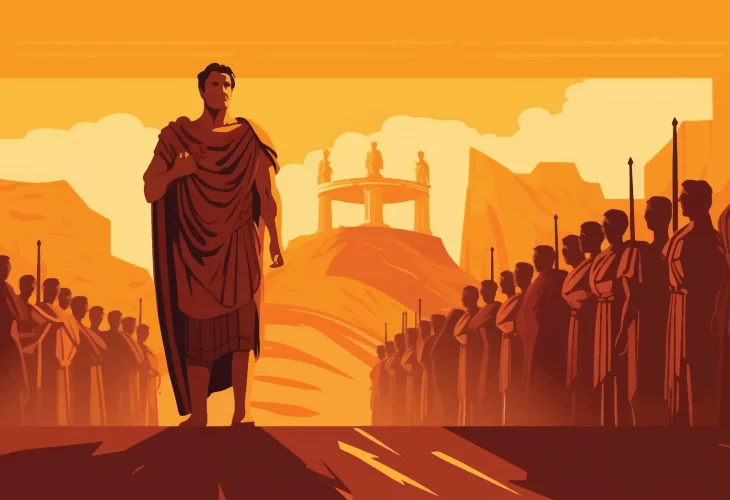How Judea Succumbed to Roman Rule: A Tale of Conflict and Strategy
Exploiting Shabbat's serenity, Romans breached the city, claiming 12,000 lives and leading Pompey into the Holy of Holies, marking a historic desecration.
 (Illustration: shutterstock)
(Illustration: shutterstock)The year is 63 BCE, 133 years before the destruction of the Second Temple. The Hasmonean brothers, Hyrcanus and Aristobulus, are locked in a bitter struggle for the throne. Aristobulus is besieged in the Temple, while Hyrcanus, aided by a large force of Arabs and Idumeans, lays siege from the outside. Both sides are deeply entrenched in their positions, with no resolution in sight.
News soon arrives that the Romans are present in Damascus. Indeed, the Roman statesman Pompey, notable for his victories against Mediterranean pirates, had dispatched his officer, Marcus Aemilius Scaurus, to Damascus. Both brothers sent delegates with financial offers to purchase his intervention, but Aristobulus's offer was the more substantial. Marcus Aemilius arrived in Jerusalem with his troops, demanding the Arabs of Hyrcanus's allies depart. As they began to withdraw, Aristobulus suddenly attacked with his cavalry, nearly annihilating them, lifting immediate threats against him.
However, Roman assistance came at a cost. Pompey himself had reached Damascus and sought to intervene. Three delegations approached him: two representing the feuding brothers, and a third from the public, advocating for the removal of the Hasmonean kings and the reinstatement of the high priesthood's authority, recalling the times of Ezra the Scribe.
Pompey decided to personally resolve the Jerusalem dilemma. He marched with his army to capture the city, besieging it for three months. He constructed a massive ramp to reach the top of the wall, but Jerusalem's defenders repulsed him. Exploiting the respite on Shabbat, the Romans breached the city walls. In the conquest, 12,000 Jews perished. With audacity, Pompey entered the Holy of Holies; for the first time since Nebuchadnezzar, over four centuries earlier, a foreign invader stepped inside the Sacred Temple!
Josephus describes, "Many of the priests saw the enemies approaching with drawn swords but did not flee, remaining in their places to serve their God. While sprinkling the sacrificial blood and tending to the incense, they were slain at their altars, valuing divine service over their lives."
Yet Pompey acted without ideological motives. He allowed the Jews to follow their religious laws but made a strategic decision: the money from Aristobulus was no longer crucial. Hyrcanus aligned with the Idumeans and Antipater the Idumean, and Pompey found the Idumeans, especially Antipater, to be partners for regional governance. Distrusting the Jews, he sought external control, appointing Hyrcanus, allied with Antipater, as "leader of the people." The monarchy in Israel was effectively abolished, and through Antipater, the actual power was exercised remotely. The Idumeans cooperated with Rome in the wars beyond the Jordan, satisfying both parties.
Aristobulus's sons, previously detained by their mother Queen Salome, were taken to Rome by Pompey as hostages to ensure their father's good behavior. Aristobulus himself was paraded humiliated in Pompey's triumphant procession.
For five years, events unfolded without notable disruptions. In 58 BCE, Alexander II, Aristobulus's son, escaped his Roman captivity, returned to Judea, and rallied an army. Hyrcanus fled Jerusalem in panic, seeking aid from the Roman commander Gabinius. Gabinius arrived eagerly, defeated Alexander's forces, executed him, and, along the way, dismantled the authority of the Jewish Great Court, the Sanhedrin, sitting in the "Chamber of Hewn Stone." Judea bowed its head to Rome and seemed poised for relative tranquility.

